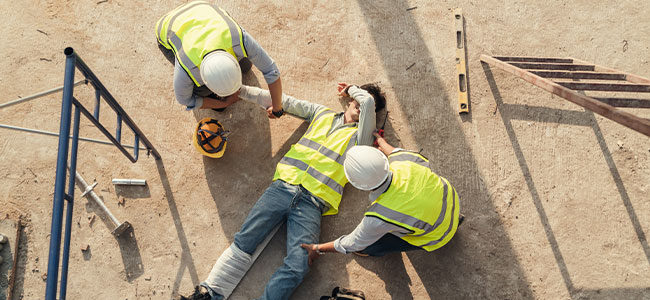
Falls are a Major Occupational Threat — How Do I Protect My People?
Occupational falls—often underestimated and primarily occurring at lower levels—have become the second-leading cause of worker deaths, necessitating a tailored and comprehensive approach to safety hazard mitigation across all industries.
- By Gen Handley
- Feb 26, 2024
A fall at work can be more dangerous than it seems. A major misconception of common slips, trips and falls is that they cause the most harm from tall heights and upper levels. The reality is that workers are more likely to die from the injuries experienced from falls at lower levels, which increased almost 3 percent according to the latest numbers on fatal occupational injuries. This data also found that fatalities from slips, trips and falls increased nearly 2 percent in 2022.
This makes occupational fall injuries the second-highest cause of worker deaths behind transportation incidents and a top safety priority for safety managers across all industries. The biggest challenge in addressing the broad category of slips, trips and falls is mitigating the varying possible causes for a worker to slip, trip, fall and hurt themselves. Because a deadly slip can occur almost anywhere, they need a customized, comprehensive approach to safety hazard mitigation, requiring various safety measures and protocols in completely different ways.
The Threat of Falls at Work
This danger of falls is present in a range of circumstances that can be found in almost any sector or job. The National Institute for Occupational Safety and Health says fall incidents at work can frequently involve circumstances including:
- Slippery, cluttered or unstable walking/working surfaces
- Unprotected edges
- Floor holes and wall openings
- Unsafely positioned ladders
- Misused fall protection
However, the potential risk for a fall hazard within the work environment can be more complicated than that, involving other factors such as cold weather and temperatures, additional PPE and equipment and improper footwear.
The Impact of Falls at Work
When an employee falls and hurts themselves at work, the consequences and required time off can broadly range from a sprained ankle to a major head injury. These injuries hurt not only the employees themselves, but their surrounding loved ones and coworkers, sometimes creating a lasting emotional impact on their lives.
It also impacts the company and its operations, requiring the time off needed to recuperate and remedy the problem so that it does not occur again and hurt more employees. According to the National Council on Compensation Insurance’s (NCCI) Workers Compensation Statistical Plan database, falls or slips were the third most costly lost-time workers’ compensation claims from 2020 to 2021, after motor vehicle crashes and burns.
This article originally appeared in the June 2024 issue of Occupational Health & Safety.